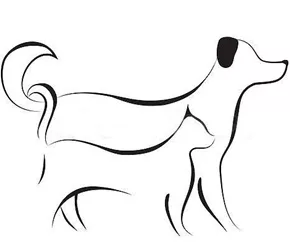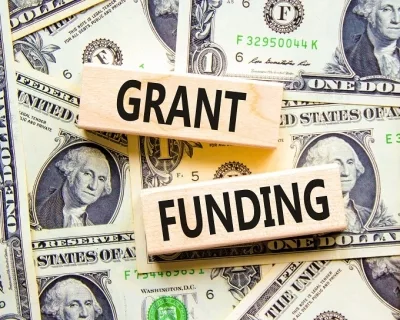From left, Capt. James “JT” Elder, commanding officer at NSWC Crane, and Raj Acharya, dean of the IU School of Informatics and Computing, sign the cooperative research and development agreement.
PHOTO BY NSWC CRANE
In a signing ceremony at 10 a.m. Thursdasy, Indiana University and U.S. Navy officials launched a new, multiyear commitment to support the integration of modern “smart” technology into existing systems critical to the country’s defense.
Through the cooperative research and development agreement, scientists at the IU School of Informatics and Computing and at the Naval Surface Warfare Center, Crane Division will work together to transform existing military sensor technology through machine learning and artificial intelligence.
The agreement was signed at the base, which is near Crane, Indiana.
The lead researchers on the project are Sriraam Natarajan, associate professor in the IU School of Informatics and Computing at IU Bloomington, and Robert Cruise, chief scientist for the Special Warfare and Expeditionary Systems Department at NSWC Crane.
The agreement is part of a larger effort at the IU School of Informatics and Computing to foster partnerships with NSWC Crane, a major economic driver in southern Indiana and one of the largest naval bases in the country.
“Artificial intelligence, machine learning and human-computer interaction are three areas of interest to the researchers at Crane, and also areas of great strength at our school,” said Martina Barnas, assistant dean for research and director of research collaborations at the IU School of Informatics and Computing. “We’re ideally positioned to assist their efforts in this important arena.”
In addition to Barnas, Natarajan and Cruise, attendees at the signing ceremony included Raj Acharya, dean of the IU School of Informatics and Computing; Rick Van Kooten, vice provost for research and associate vice president for research at IU; Joe Carley, associate director for economic development at IU; and Capt. Jeffrey “JT” Elder, commanding officer at NSWC Crane.
“Machine learning refers to the development of algorithms that enable computers to learn and adapt to new situations based upon existing data,” Natarajan said. He said the collaboration between IU and NSWC Crane will apply these models to the massive amounts of data collected by naval technology — such as drones or radar arrays — in order to translate the information into a form that’s more useful to people.
Access to the Navy’s data is critical to the project because the more real data IU researchers can provide their machine learning system, the “smarter” it can grow. A typical naval monitoring system might use over 100 sensors to detect a wide range of phenomenon, such as infrared light and microwave emissions.
“With sensor technology growing so advanced and proliferating so quickly, human operators are unable to keep up with the information coming in,” Cruise said. “Increasingly, we need to augment human operators’ intelligence with artificial intelligence.”
To illustrate how machine learning strengthens sensor technology, Natarajan uses the example of two points of light traveling down a darkened road. Although a sensor can pick up the lights, it can’t necessarily determine the source of the light in the same way as a person, who can potentially interpret the light as a single vehicle or two motorcycles based upon whether the distance between the lights varies. A computer would need to use machine learning to make a similar assessment.
Other scenarios that could benefit from the technology include identifying objects on the ground based upon data collected by a drone in flight, identifying the type of object entering a roadway, or assessing the potential danger of an incoming projectile, Cruise said.
“The final decision always remains in the hands of the human operator,” he added. “Once the sensor data is understood, or a threat recognized, an artificial intelligence system turns that information over to the person in charge of the situation.”
The project is a strong fit for Natarajan’s team at IU — the IU Statistical Relational AI Lab — since the group is focused on creating probabilistic models of learning — that is, models that can handle noise and uncertainty, “which is often the case in the real world,” Natarajan said.
In the first phase of the study, IU researchers will draw upon test data generated through controlled sensor experiments at NSWC Crane. After establishing that they’re able to accurately interpret the data, the researchers plan to move onto using “real” data from the field.
As part of the agreement, the IU School of Informatics and Computing will also provide support for a graduate-level researcher on the project in Natarajan’s lab. Team members will include researchers from this group and scientists from Cruise’s team at NSWC Crane.
“This agreement is a truly exciting opportunity,” Natarajan added. “Crane, which is right in our backyard, has a wealth of data to advance our research, as well as challenges that we can help solve. It’s great to find a partner in southern Indiana who’s pursuing the same topics we’re studying.”













